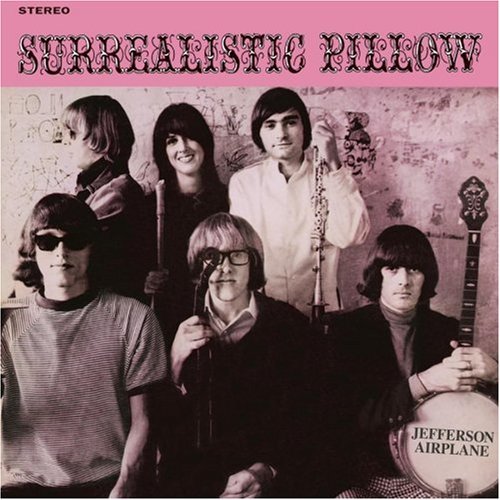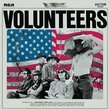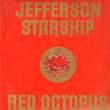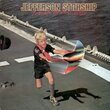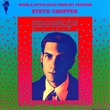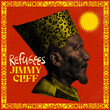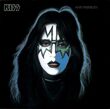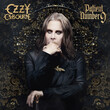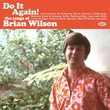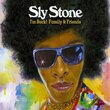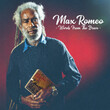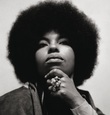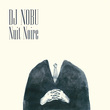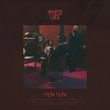Scroll down to read original article in English
〈リアリティー(現実)に完全に包囲された49平方マイル(約127km2)の土地〉――ジェファーソン・エアプレインのヴォーカル兼ギタリストのポール・カントナーが、かつてサンフランシスコをこう形容した。そんな彼こそ、サンフランシスコを進歩的な政治思想やクリエイティヴなアートの人気スポットたらしめた火付け役のひとりだが、このたび74歳にして心臓発作と多臓器不全により亡くなった。
サンフランシスコで生まれたポールは、8歳の時に母を亡くして苦難の少年時代を送っている。母の死後、父親の手によってカトリック系の寄宿学校に送られるも、すぐに反抗的になる。そしてフォーク・シンガーのピート・シーガーの影響も受け、若くしてポリティカルなフォーク・シンガーとなり、サンフランシスコのフォーク・クラブ〈Drinking Gourd〉で役者/歌手のマーティ・バリンと出会って、2人はバンドを結成。ワシントンDC生まれのブルース・ギタリストであるヨーマ・カウコネンが、彼の高校時代からの友人でバンド仲間でもあるジャック・キャサディも引き連れて2人で加入する。さらに、女性ヴォーカルのシグニー・アンダーソンも仲間入りした。
初めてのアルバムは、65年にリリースされた『Takes Off』。マーティとポールが書いた曲を収録した同作は、チャートでは128位止まりだった。このアルバムのあと、シグニーが妊娠してバンドを去り、替わりにグレイト・ソサイエティからグレイス・スリックを引き抜く(しかも彼女は当時まだ前バンドとの契約中であったため、金額にして750ドルを支払って獲得)。また、ドラマーのスキップ・スペンス※はバンドを退き、その席をスペンサー・ドライデンに譲った。そして、このメンバーこそが〈ジェファーソン・エアプレイン〉としてバンドを〈離陸〉させる乗組員となったのだ。
※のちにモビー・グレープを結成し、知る人ぞ知るあくの強いソロ名義のアルバム『Oar』を世に送り出すも、重度の精神障害や薬物問題で苦しむことになる
彼らはあらゆる点で型破りだった。特にヴォーカルについては、ポールとマーティ、グレイスの3人とでそれぞれが受け持ったり、といった具合に。67年には、代表作『Surrealistic Pillow』をリリース。“Somebody To Love”やサイケデリックなナンバー“White Rabbit”などの大ヒット曲を収録した同作は、ビルボード・チャートの3位まで上り詰める。サンフランシスコ出身として初めてヒット曲を輩出したバンドである彼らは、のちに〈サンフランシスコ・サウンド〉で知られるようになる音楽の旗揚げ役となったのである。メンバーはかの有名はヘイト・アシュベリー地区の2400 Fulton Streetに居を構えて共同生活を送っていたが、界隈にはグレイトフル・デッドやジャニス・ジョプリンなども住んでおり、そうこうしないうちにその地域はカルチャーの中心地として有名になる。
時を経て、同バンドはジャニス・ジョプリンやデヴィッド・クロスビー、またクイックシルヴァー・メッセンジャー・サーヴィスのメンバーなどのほか、特にジェリー・ガルシアとよくコラボするようになる。ジェファーソン・エアプレインの音楽はエクスペリメンタルな要素が特徴的で、そこにはロマンティックあるいは政治的、はたまたSFの要素(ポールは大のSF好きとして知られている)に加え、ドラッグの影響を受けた曲もあった。一時はビル・グレアム(ロック界を代表するプロモーター)がマネージャーを務めたこともあり、当時彼が新しく手掛けていたライヴハウスの〈The Filmore〉でヘッドライナーを務めることもあった。一方、〈モントレー・ポップ・フェスティヴァル〉〈ウッドストック〉や〈オルタモント〉など、伝説的なイヴェントにも出演しているほか、ヨーロッパ公演も果たしている。そのヨーロッパではドアーズとの共同ライヴでツアーを回った。
6枚目のアルバム、69年発表の『Volunteers』が、ジェファーソン・エアプレインのオリジナル・メンバーでの最後のアルバムとなり、一部のファンの間ではバンドの最高傑作として賞賛されている。人気の高い“We Can Be Together”や“Wooden Ships”“Volunteers”は、ポールが一人で曲を書いているか、誰かとポールの共作曲だ。その他、初期の人気曲“Today”や “Volunteers”、また“Crown of Creation”などは、やはりすべて(一部関与しているパターンも)ポールが手掛けている。70年にはバンドを追放されたスペンサー・ドライデンに替わって、ジョーイ・コヴィントンが加入。彼はもともと、ヨーマとジャックが所属していたブルース系のプロジェクト、ホット・ツナの一員でもあった。翌71年には、ポールとグレイスとの間に娘のチャイナ・ウィング・カントナーが生まれる(チャイナはのちにMTVのVJとして活躍)。
そんな折、それまでメインで楽曲を書いていたメンバーの一人であったマーティが脱退。結局残されたホット・ツナのメンバーがその役を全面的に担うことになった。そして71年にはバンド・メンバーが交通事故に遭う。ゴールデンゲート・ブリッジを時速160キロ強で疾走していたヨーマに同乗していたグレイス・スリックが重傷を負う。バンドはことごとく混乱を極めていき、それをかろうじてポールが繋ぎ止めている状態であったが、それでも奇跡的にジェファーソン・スターシップとして生まれ変わった。ポールは、まだティーンエイジャーのギタリストであるクレイグ・チャキーソを起用し、タートルズからドラマーのジョニー・バーバタと古くからの友人のピート・シアーズをメンバーに加える。(ジェファーソン・)スターシップは、どちらかというとより真剣かつポップ寄りなバンドに。メンバーの入れ替わりも激しく、グレイスとマーティも断続的にしかバンドへの貢献を果たさないわりには、バンド自体は大成功を収めていった。75年にリリースされた2枚目のアルバム『Red Octopus』は全米1位を獲得し、〈ジェファーソン〉を冠した作品のなかではもっとも高い売り上げを記録した。同作品に収録されたロマンティックなシングル“Miracles”は全米3位を獲得している。
その後リリースされたアルバム『Freedom At Point Zero』は、初めてグレイスとマーティがいずれも参加していない作品だったが、エルヴィン・ビショップのバンドにも所属していたという新しいヴォーカリスト=ミッキー・トーマスを迎え、大ヒット曲“Jane”を収録している。ここにきて、スターシップはかつてのエアプレインのようなヒッピーなバンドではなく、小奇麗でメインストリームなバンドになってきていた。その過程で、古くからのファンが離れる一方で新しいファンも獲得。そのことに対する批評への回答は、81年のアルバムに収録されている”Stairway To Cleveland”でポールが書いた歌詞に込められている。〈fuck you we do what we want〉=クソくらえだ、俺たちがやりたいようにやってやる、と。しかし、スターシップのバンド内部では不和が生じていた。内輪揉めが絶えないなか、ポールは84年作『Nuclear Furniture』のシンセ寄りの方向性に不満を持っていた。結局このアルバムを最後に、ポールはグループを脱退、そこから〈ジェファーソン〉という名前を巡る法的抗争が始まる。これを機に、エアプレインとスターシップのメンバーが入り乱れてプレイする期間に入るが、どんな編成も長く続くことはなかった。だが、88年にポールがホット・ツナのライヴへゲスト出演した際、突如グレイス・スリックがステージに登場し、ジェファーソン・エアプレインのほぼ完全な形での再結成的なステージになったこともある。翌99年には、結局再結成ツアーを敢行した。
ポールとグレイスが結婚することはなかったが、69年から75年までの間、交際を続けていた。その後グレイスは、75年にバンドの照明技術者であったスキップ・ジョンソンと結婚し、18年間夫婦生活を送った。しかし、ポールとグレイスは2人の状況が変化しつつも共同で音楽活動に取り組み続けた。
また、ポールは政治やアートの分野で積極的に活動し、ナイトクラブに行っては多種多様の音楽をチェック。ノース・ビーチ地域のCaffe Trieste に常連客として出入りするなど、その姿はサンフランシスコのあちこちで見られた。また87年に旅したニカラグアでのサンディーノ民族との交流についての本も執筆している。
ジェファーソン・エアプレインのメンバーで、死亡時にサンフランシスコに在住していたのはポールただ一人だった。しかし、偶然にも同じ日にエアプレインのオリジナル・ヴォーカリスト、シグニー・アンダーソンも亡くなっている。それらの訃報にあたって、マーティ・バリンはこう述べたと伝えられている。
「ひとりの素敵な女性が旅立たった。おそらく天国でポールといっしょに目覚め、〈あら、こんなところで何してるの? バンドでもやろうよ〉なんて言ってるんじゃないかな」
Jefferson Airplane singer/ guitarist Paul Kantner once described San Francisco as “49 square miles, surrounded entirely by reality”. One of the artistic sparks that made San Francisco a hot spot for progressive politics and creative arts, was Paul Kantner himself, who died yesterday at age 74 from a heart attack. The SF-born Kantner had a trying childhood, losing his mother when he was just eight. His father sent him off to a Catholic run military boarding school, from which he soon rebelled. As a young man he became a folk singer with a political warp, influenced in part by Pete Seeger. He met actor/ singer Marty Balin at the SF folk club the Drinking Gourd, and they decided to form a band. They drafted the Washington DC-born blues guitarist Jorma Kaukonen, who brought along his high school friend and bandmate, bassist Jack Casady. Also joining in was female singer Signe Anderson. The band’s first album 1965’s “Takes Off”, a mix of songs written by Balin & Kantner and covers, charted at #128. Following this album, Signe became pregnant, left the band and was replaced by Grace Slick of the Great Society (bought out of her contract for $750), and their drummer Skip Spence (who would later found Moby Grape, make the cult album “Oar” and have severe mental and drug problems) was replaced by Spencer Dryden. It was with this line-up that Jefferson Airplane really took flight.
They were unorthodox in numerous ways, including splitting singing duties between three members- Kantner, Balin and Slick. In 1967 they released their landmark album “Surrealistic Pillow”, which went to #3 in Billboard, driven by the huge hits “Somebody To Love” and the psychedelic “White Rabbit”. They became one the first of the SF bands to have a hit, helping launch what became known as the “San Francisco sound.” The band lived communally in a house at 2400 Fulton, in the soon to be famous Haight-Ashbury neighborhood, as did their friends the Grateful Dead, and Janis Joplin.
Over time they would collaborate with numerous other musicians, notably Jerry Garcia, Janis Joplin, David Crosby and members of Quicksilver Messenger Service. Jefferson Airplane’s music was characteristically experimental, and could include romantic, political, science fiction (Kantner was a major sci-fi fan), blues and LSD influenced songs. The band was for awhile managed by Bill Graham, who booked them to headline at his new venue The Fillmore. They also performed at the legendary events the Monterey Pop Festival, Woodstock and Altamont. The Airplane also played in Europe,including an extended tour with the Doors. The band’s sixth album, 1969’s “Volunteers”, proved to be the last with the classic Jefferson Airplane line-up, and for some fans was their best work. The best known songs “We Can Be Together”, “Wooden Ships” and “Volunteers” were all written or co-written by Kantner. Other popular songs from their early era written in whole or in part by Kantner include “Today”, “Volunteers” and “Crown of Creation”. In 1970 Spencer Dryden was kicked out of the band and replaced by Joey Covington, who played with Jorma and Jack in their more blues-geared side project Hot Tuna. In 1971 Paul and Grace had a child together, China Wing Kantner (who would grow up to be a MTV VJ).
Then Marty Balin, who was one of the band’s main writers, quit, and the Hot Tuna guys left to do that more full time. Also 1971 Grace Slick was seriously injured in an auto accident, which occurred while she and Jorma raced at over 100 MPH on the Golden Gate Bridge. With the band now seemingly in total disarray, and at times only Kantner holding it together, the band miraculously was reborn as Jefferson Starship. Kantner discovered a teenage guitarist named Craig Chaquico, and drafted Turtles drummer Johnny Barbata and old friend Pete Sears. Starship became a more focused and pop oriented band. Despite numerous line-up changes, and with Grace Slick and Marty Balin contributing only off and on, Jefferson Starship became tremendously successful. Their second album “Red Octopus” in 1975 became the best selling of any Jefferson vehicle. reaching #1, with the romantic single “Miracles” going to #3.
The album “Freedom at Point Zero” was the first in which neither Grace Slick or Marty Balin participated, and the first with newly appointed singer Mickey Thomas, who had previously been in Elvin Bishop’s band. It produced one of their biggest ever hits “Jane”. Starship had become a sleeker, more mainstream band than the hippie-ish Airplane. Along the way they lost some of their older fans, but gathered many new ones. In answer to some critics, the tempestuous Kantner contributed lyrics to their song of 1981, “Stairway to Cleveland” , -“fuck you we do what we want”. However all was not well within the Jefferson Starship. There was much infighting, and Kantner was unhappy with the synth- oriented direction of 1984’s “Nuclear Furniture”, which became the bands last album, as Kantner quit the group and a legal struggle over the “Jefferson” name began. Thus began a period where various members of the Airplane and Starship would play together, numerous formations lasting only a short time. In 1988 Kantner was a special guest for a Hot Tuna show, when suddenly Grace Slick walked on stage, and a near perfect reunion of the Jefferson Airplane took flight again. It was followed by a reunion tour in 1989. Kantner and Slick never married but were together 1969 to 1975, after which she took up with the band’s lighting director Skip Johnson, to whom she was married for 18 years. Kantner and Slick however managed to still collaborate musically throughout the changes.
Kantner was quite visible in SF, active in politics and art, often spotted at night clubs checking out all kinds of music, and having coffee at his hangout Caffe Trieste in SF’s North Beach district. He also found time to write a book about his journey to Nicaragua and his encounters with the Sandinistas in 1987.
At the time of his death he was the only member of Jefferson Airplane still living in SF. Coincidentally, original Airplane singer Signe Anderson died the very same day. Marty
Balin was quoted as saying, “One sweet lady has passed on. I imagine that she and Paul woke up in heaven and said ‘hey what are you doing here? Let’s start a band”
